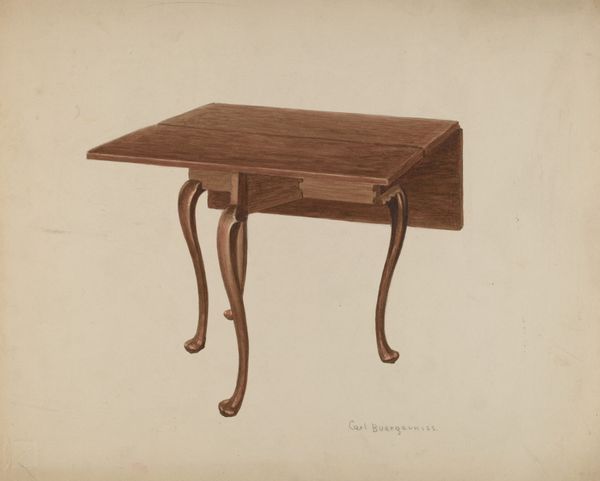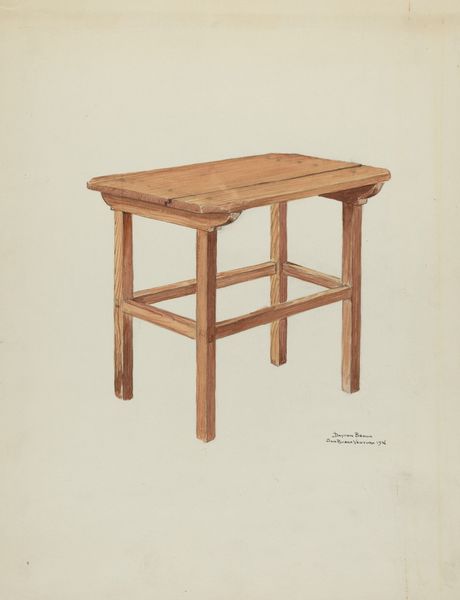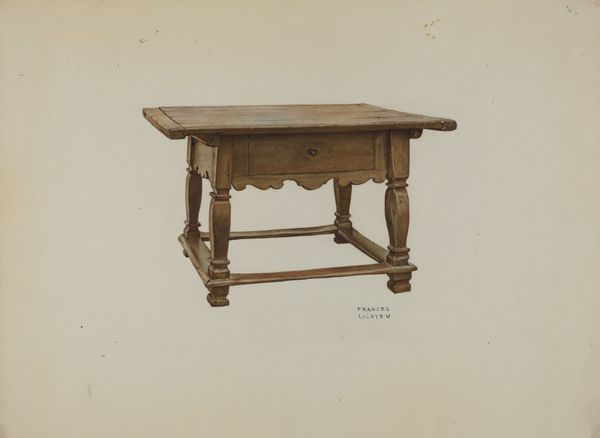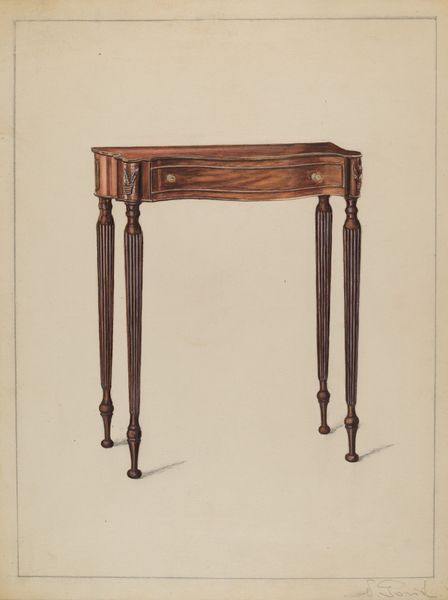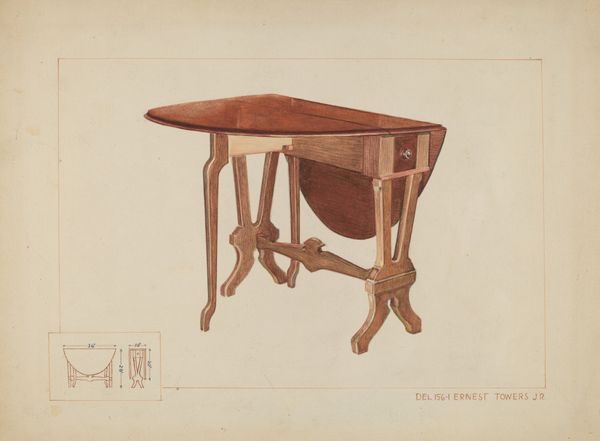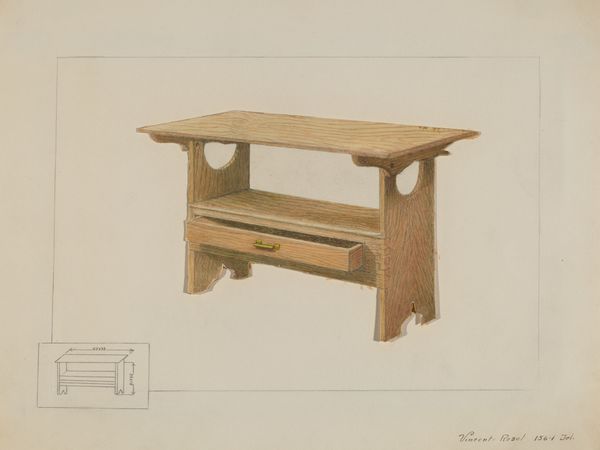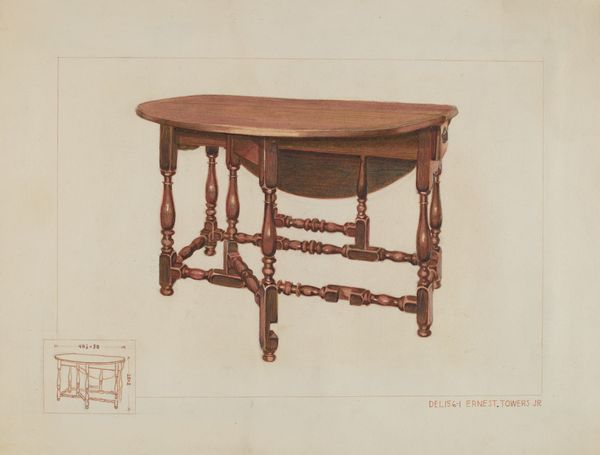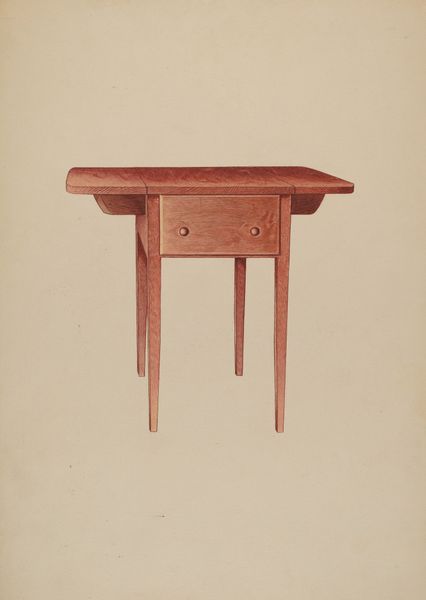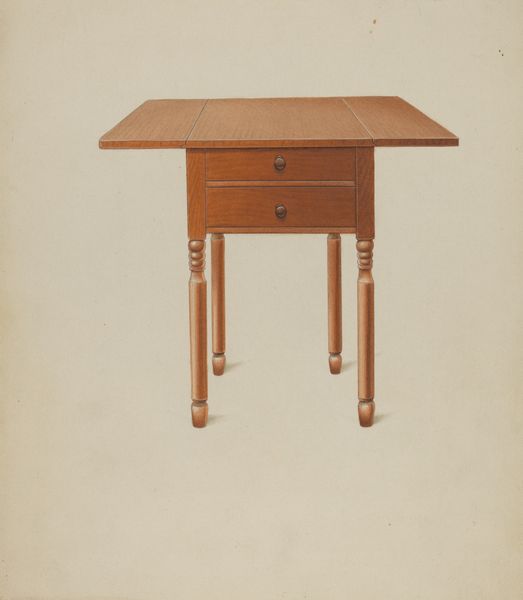
Dimensions: overall: 27.9 x 23 cm (11 x 9 1/16 in.)
Copyright: National Gallery of Art: CC0 1.0
Curator: This is a watercolor drawing entitled "Shaker Short Bench," created by Lawrence Foster between 1935 and 1942. It presents a straightforward depiction of a bench, focusing on its clean lines and construction. What’s your initial impression? Editor: It feels so…quiet. There's a sense of calm and functionality. But I can't help but wonder, who was this bench made for? Who did it serve in the community, and what's implied by "short"? Curator: That's interesting! The Shakers were known for their minimalist design and commitment to functionality. It appears as though Foster carefully observed not only the design itself but the materiality of its construction as well. Note how the watercolor medium mirrors the honest simplicity inherent to the Shaker aesthetic, creating a resonance between form and content. Editor: And it's also impossible to ignore the social context here. Shaker furniture embodies a whole set of values regarding labor and craftsmanship. We're talking about a community structured around communal living, celibacy, and self-sufficiency. Each piece speaks to the division of labor but also, given the period, stands as a critique of industrial mass production. Curator: Exactly! Every joint and surface reflect purpose and method, but seeing this today, do you think that this movement successfully undermined such mass production? Or instead was consumed by it, so to speak? Editor: In some ways, yes and no. The Shakers, although trying to separate themselves from consumerism and worldly concerns, inevitably encountered the realities of economic systems and supply. Also, it may be interesting to consider what values we overlook now as being essential in a modern, faster paced era. Curator: Definitely worth reflecting on! Seeing how labor is seen as a valued component and what happens to that concept as society shifts forward. Editor: Precisely! It highlights the power of design to communicate deeper principles but it invites reflections on labor and value across time, doesn’t it? Curator: Yes, it makes one think about these topics in broader scope! Thanks. Editor: Of course, thanks to you!
Comments
No comments
Be the first to comment and join the conversation on the ultimate creative platform.
